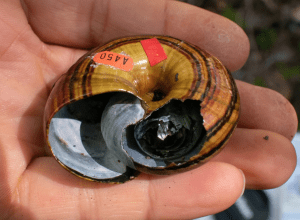
Rats on bird nest—courtesy of Nga Manu Images
Not very long ago robins were widespread and common throughout this national park. They have gone from coastal forests in the last 30 years and now they are mostly confined to the higher altitude forests.
It seems reasonable to explain this gradual attrition to predation by rats with the current population still declining but at a slower rate in forests where rats are less abundant. It is a long-term goal of Project Janszoon to reduce rat abundance to a level that provides security for this population and which allows dispersing birds to establish in the lower altitude forests again.
Controlling rats and maintaining them at low densities is the holy grail of conservation in mainland forests. Rats live at high densities and quickly re-invade from any area that may have been missed by trapping or toxins and, of course, they also re-invade from outside the treatment area. The ability to reproduce quickly adds to the problem.
While Project Janszoon is focused on periodic and extensive aerial application of 1080 to achieve this goal it has supported Abel Tasman Birdsong Trust in a trial of the gas-powered re-setting rat traps. Allan Barker has led this work in an area of 130ha from Pitt Head to Watering Cove. After several teething problems with the technology Allan and his team are now holding rat numbers at very low densities. Now is the time to capitalise on this work and see if we can establish a ‘beach head’ of robins in this safe habitat and, over time, this population may provide a nucleus for that widespread recovery we hope for. Some more background to this concept was described in an earlier posting.

None of this is an exact science. Birds may disperse into ratty areas where they cannot breed safely, others may try to make the flight back to the island. A beech mast may increase rodent numbers beyond what the traps can handle. Nevertheless this may also be an important step towards restoring a robust robin population in the park.



